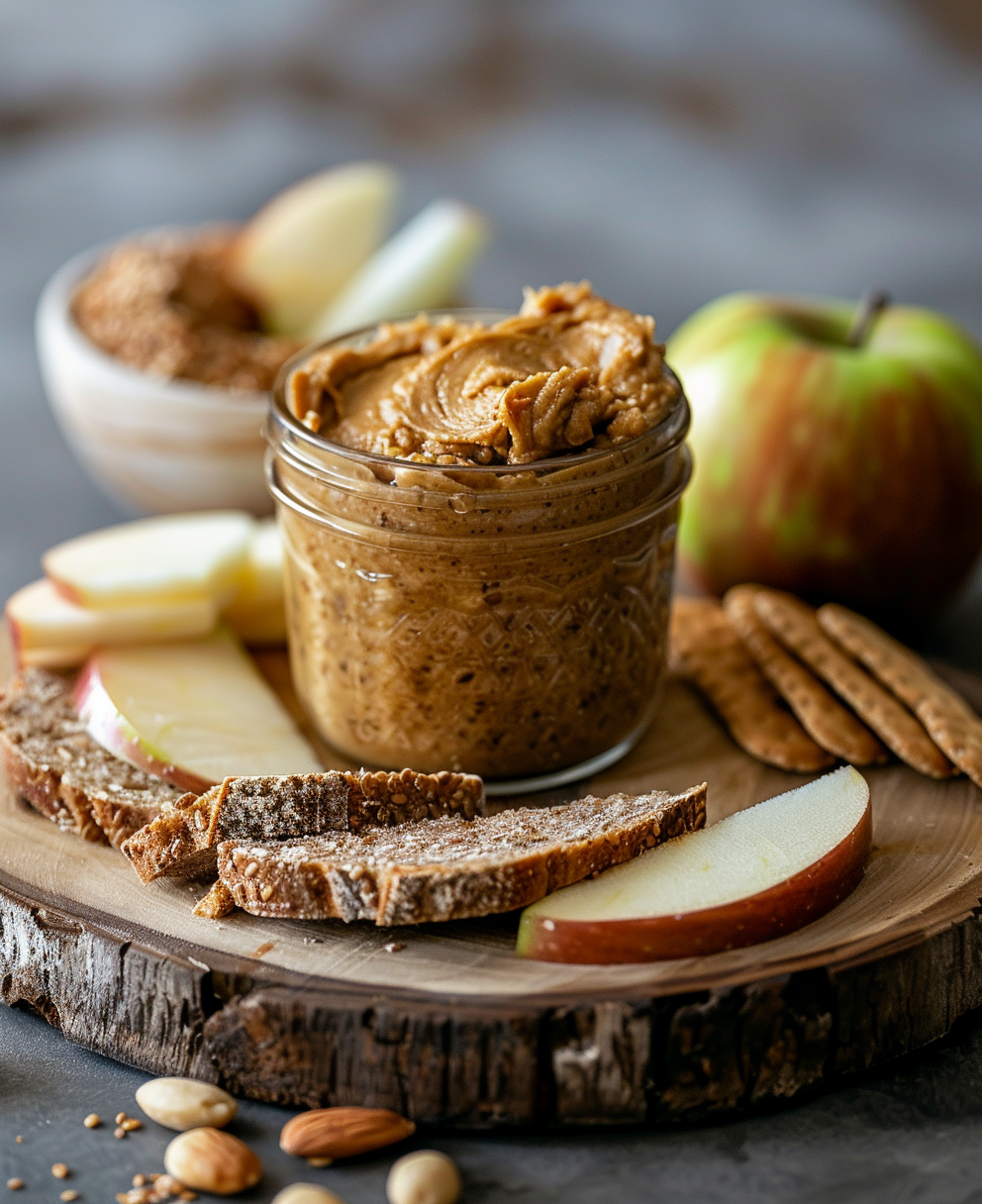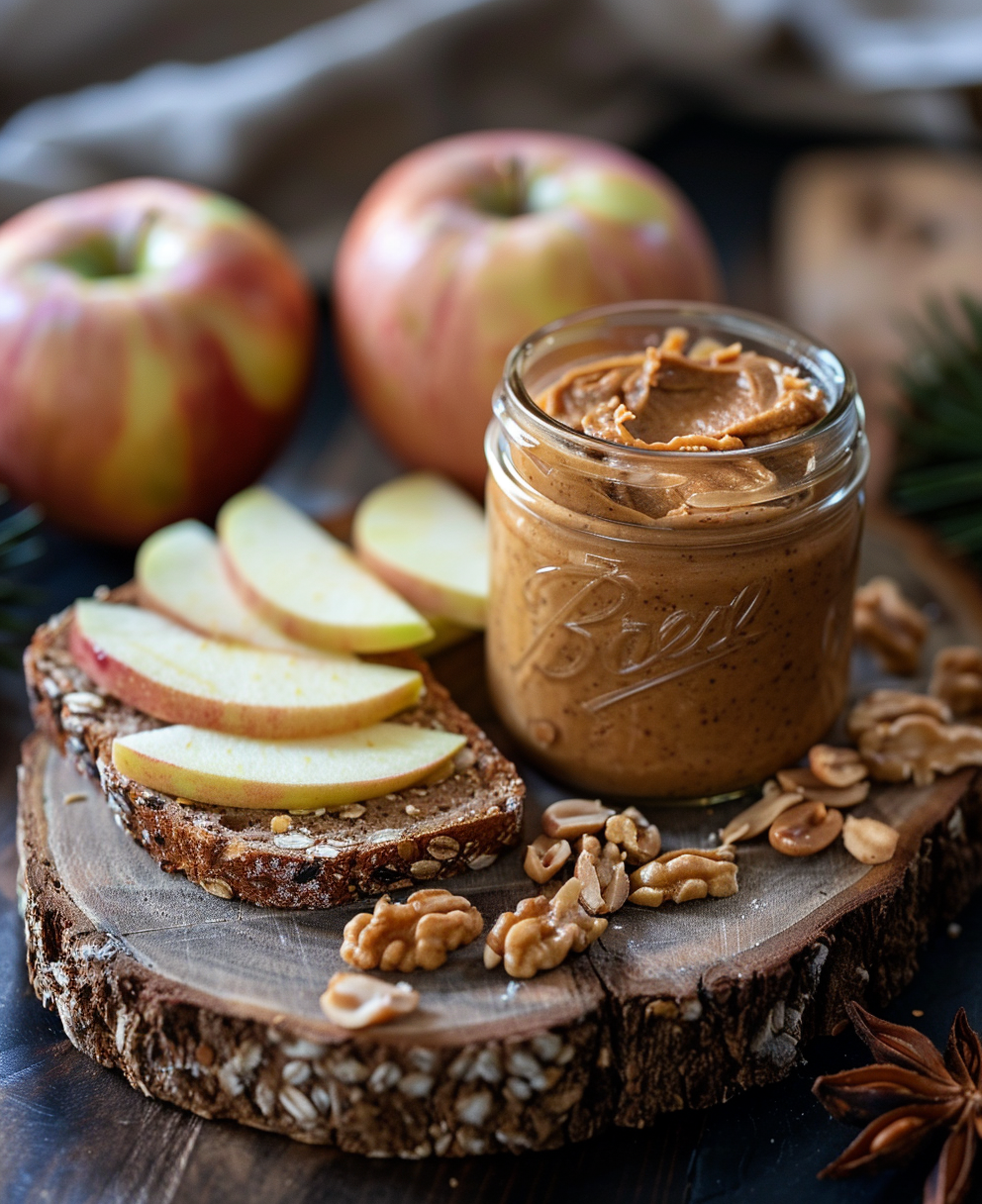Why Low Sugar Peanut Butter Changed My Life
Peanut butter and I go way back. As a kid, I’d sneak spoonfuls straight from the jar, pretending it was my little secret. Fast forward to today, and I’m still obsessed—but now, as someone who loves cooking for family and friends, I’ve learned to balance flavor with health. That’s where low sugar peanut butter comes in. It’s creamy, nutty, and guilt-free, making it perfect for anyone looking to enjoy a classic comfort food without the sugar rush.
A Little History of Peanut Butter
Did you know peanut butter has been around since the Aztecs? They ground roasted peanuts into a paste, which is pretty much the OG version of what we love today. Over time, modern recipes added sugar, oils, and preservatives, turning it into something less wholesome. But brands like Smuckers natural peanut butter, Jif natural peanut butter, and Maranatha organic peanut butter have brought us back to simpler times. My journey into low sugar peanut butter began when I wanted to make a spread that tasted amazing but didn’t spike blood sugar levels. Spoiler alert: mission accomplished!
Why You’ll Love This Recipe
This recipe isn’t just about cutting sugar—it’s about keeping all the goodness intact. The rich, nutty aroma fills your kitchen while blending, and the texture is smooth yet hearty. Plus, it’s super versatile. Spread it on toast, mix it into smoothies, or dip apple slices in it. If you’re wondering, “What is the healthiest peanut butter for a diabetic?” or “Can I eat peanut butter on a no sugar diet?”—this one ticks all the boxes. It’s also a great option if you’re curious about how healthy is Adams peanut butter.
Perfect Occasions to Make This Peanut Butter
Whether you’re prepping snacks for a road trip, packing lunches for the kids, or hosting a brunch, this low sugar peanut butter fits right in. It’s especially great for holiday gift baskets or as a treat during busy workweeks. Honestly, there’s no bad time to whip up a batch!
Ingredients
- 2 cups raw unsalted peanuts
- 1 tablespoon coconut oil (optional)
- 1 teaspoon vanilla extract (optional)
- A pinch of sea salt
Substitution Options
- Use almond oil instead of coconut oil for a different flavor profile.
- Skip the vanilla extract if you prefer plain peanut butter.
- Add a dash of cinnamon for a warm, spicy twist.
Step 1: Roast the Peanuts
Preheat your oven to 350°F (175°C). Spread the peanuts evenly on a baking sheet and roast them for about 10 minutes. Keep an eye on them—they should smell nutty and turn golden brown. Pro tip: Stir halfway through to prevent burning. Roasting enhances their natural sweetness, so you won’t miss the added sugar.
Step 2: Blend Until Smooth
Transfer the roasted peanuts to a food processor. Blend on high speed until they release their oils and form a smooth paste. This can take anywhere from 5 to 10 minutes. At first, it might look crumbly, but trust the process! Add coconut oil here if you want a creamier consistency. Chef’s tip: Scrape down the sides occasionally to ensure even blending.
Step 3: Add Flavor Enhancers
Once your peanut butter is smooth, stir in the sea salt and vanilla extract. Taste test it—you might find it perfect as is, or you may want a touch more salt. Pour the finished product into a clean jar. Doesn’t it look gorgeous sitting there, ready to be devoured?
Timing
- Prep Time: 5 minutes
- Cooking Time: 10 minutes
- Blending Time: 10 minutes
- Total Time: 25 minutes
Chef’s Secret
For an extra layer of flavor, sprinkle a tiny bit of flaky sea salt on top before serving. Trust me, it makes a world of difference.
Extra Info
Fun fact: Peanuts aren’t actually nuts—they’re legumes! And guess what? They pack more protein than most tree nuts. That’s why low calorie peanut butter options are becoming so popular among fitness enthusiasts.
Necessary Equipment
- Baking sheet
- Food processor or high-speed blender
- Glass jar for storage
Storage Tips
Store your homemade low sugar peanut butter in an airtight container at room temperature for up to two weeks. For longer shelf life, keep it in the fridge. The cold firms it up slightly, so let it sit out for a few minutes before using. Always use a clean utensil to scoop it out to avoid contamination. Lastly, don’t forget to label your jar with the date—it’s easy to lose track!
Tips and Advice
If you’re new to making peanut butter, start with small batches. Freshness matters, and smaller portions mean less waste. Also, experiment with textures—some people love chunky peanut butter, while others prefer silky smooth. Try pulsing a handful of chopped peanuts into the mix for chunks.
Presentation Ideas
- Serve it in mini mason jars tied with ribbon for gifts.
- Pair it with sliced bananas or strawberries on a charcuterie board.
- Drizzle honey on top for a decorative touch (optional).
Healthier Alternative Recipes
Here are six variations to try:
- No Sugar Peanut Butter: Skip any sweeteners entirely.
- Sugar Free Peanut Butter: Use stevia drops for sweetness.
- Healthiest Peanut Butter UK Style: Add chia seeds for omega-3s.
- Best Tasting Peanut Butter 2017 Winner: Mix in dark chocolate chips.
- Jif Peanut Butter Inspired: Add a hint of molasses for depth.
- Low Calorie Peanut Butter: Substitute half the peanuts with chickpeas.
Mistake 1: Overroasting the Peanuts
Overroasting gives your peanut butter a bitter taste. To avoid this, set a timer and check frequently. Remember, golden brown is your goal—not dark brown.
Mistake 2: Not Blending Long Enough
Patience is key! Stopping too soon leaves you with dry, crumbly peanut butter. Keep blending until the oils fully incorporate. Pro tip: Let the machine rest briefly if it gets too hot.
Mistake 3: Adding Too Much Oil
A little oil goes a long way. Start with a teaspoon and adjust only if needed. Otherwise, your peanut butter could end up too runny.
FAQ
Which peanut butter is low in sugar?
Brands like Smuckers natural peanut butter and Jif natural peanut butter offer low sugar options. Homemade versions, like this one, give you full control over the ingredients.
What is the healthiest peanut butter for a diabetic?
Look for no sugar peanut butter or make your own. Natural options without added sugars are ideal for managing blood sugar levels.
Can I eat peanut butter on a no sugar diet?
Absolutely! Opt for sugar free peanut butter or make a batch yourself. Just watch portion sizes since peanuts are calorie-dense.
Is low sugar peanut butter good for you?
Yes! It’s packed with protein, healthy fats, and essential nutrients. Plus, it keeps cravings in check without spiking blood sugar.
How do I thicken runny peanut butter?
Refrigerate it for a firmer texture. Alternatively, blend in a few more peanuts to absorb excess oil.
Can I freeze peanut butter?
You can, but it changes texture. Store in small portions and thaw overnight in the fridge before use.
Does homemade peanut butter spoil faster?
It does because it lacks preservatives. Use within two weeks at room temp or store in the fridge for extended freshness.
Is Maranatha organic peanut butter worth it?
Many swear by its quality and taste. If you buy store-bought, it’s a solid choice for organic lovers.
How do I remove bitterness from peanut butter?
Balance bitterness by adding a pinch of salt or a drop of vanilla extract. Avoid overroasting next time.
Why does my peanut butter separate?
That’s normal for natural peanut butter. Simply stir well before each use.
Final Thoughts
Making your own low sugar peanut butter is easier than you think, and it’s incredibly rewarding. With endless customization possibilities, you can tailor it to suit your tastes and dietary needs. Whether you’re sharing it with loved ones or enjoying it solo, this recipe proves that simple, wholesome ingredients are always best. So grab those peanuts and get blending—you won’t regret it!

Low Sugar Peanut Butter: Discover the Tastiest Healthy Option Today!
Why Low Sugar Peanut Butter Changed My Life
Peanut butter and I go way back. As a kid, I’d sneak spoonfuls straight from the jar, pretending it was my little secret. Fast forward to today, and I’m still obsessed—but now, as someone who loves cooking for family and friends, I’ve learned to balance flavor with health. That’s where low sugar peanut butter comes in. It’s creamy, nutty, and guilt-free, making it perfect for anyone looking to enjoy a classic comfort food without the sugar rush.A Little History of Peanut Butter
Did you know peanut butter has been around since the Aztecs? They ground roasted peanuts into a paste, which is pretty much the OG version of what we love today. Over time, modern recipes added sugar, oils, and preservatives, turning it into something less wholesome. But brands like Smuckers natural peanut butter, Jif natural peanut butter, and Maranatha organic peanut butter have brought us back to simpler times. My journey into low sugar peanut butter began when I wanted to make a spread that tasted amazing but didn’t spike blood sugar levels. Spoiler alert: mission accomplished!Why You’ll Love This Recipe
This recipe isn’t just about cutting sugar—it’s about keeping all the goodness intact. The rich, nutty aroma fills your kitchen while blending, and the texture is smooth yet hearty. Plus, it’s super versatile. Spread it on toast, mix it into smoothies, or dip apple slices in it. If you’re wondering, “What is the healthiest peanut butter for a diabetic?” or “Can I eat peanut butter on a no sugar diet?”—this one ticks all the boxes. It’s also a great option if you’re curious about how healthy is Adams peanut butter.Perfect Occasions to Make This Peanut Butter
Whether you’re prepping snacks for a road trip, packing lunches for the kids, or hosting a brunch, this low sugar peanut butter fits right in. It’s especially great for holiday gift baskets or as a treat during busy workweeks. Honestly, there’s no bad time to whip up a batch!Ingredients
- 2 cups raw unsalted peanuts
- 1 tablespoon coconut oil (optional)
- 1 teaspoon vanilla extract (optional)
- A pinch of sea salt

Substitution Options
- Use almond oil instead of coconut oil for a different flavor profile.
- Skip the vanilla extract if you prefer plain peanut butter.
- Add a dash of cinnamon for a warm, spicy twist.
Step 1: Roast the Peanuts
Preheat your oven to 350°F (175°C). Spread the peanuts evenly on a baking sheet and roast them for about 10 minutes. Keep an eye on them—they should smell nutty and turn golden brown. Pro tip: Stir halfway through to prevent burning. Roasting enhances their natural sweetness, so you won’t miss the added sugar.Step 2: Blend Until Smooth
Transfer the roasted peanuts to a food processor. Blend on high speed until they release their oils and form a smooth paste. This can take anywhere from 5 to 10 minutes. At first, it might look crumbly, but trust the process! Add coconut oil here if you want a creamier consistency. Chef’s tip: Scrape down the sides occasionally to ensure even blending.Step 3: Add Flavor Enhancers
Once your peanut butter is smooth, stir in the sea salt and vanilla extract. Taste test it—you might find it perfect as is, or you may want a touch more salt. Pour the finished product into a clean jar. Doesn’t it look gorgeous sitting there, ready to be devoured?Timing
- Prep Time: 5 minutes
- Cooking Time: 10 minutes
- Blending Time: 10 minutes
- Total Time: 25 minutes
Chef’s Secret
For an extra layer of flavor, sprinkle a tiny bit of flaky sea salt on top before serving. Trust me, it makes a world of difference.Extra Info
Fun fact: Peanuts aren’t actually nuts—they’re legumes! And guess what? They pack more protein than most tree nuts. That’s why low calorie peanut butter options are becoming so popular among fitness enthusiasts.Necessary Equipment
- Baking sheet
- Food processor or high-speed blender
- Glass jar for storage
Storage Tips
Store your homemade low sugar peanut butter in an airtight container at room temperature for up to two weeks. For longer shelf life, keep it in the fridge. The cold firms it up slightly, so let it sit out for a few minutes before using. Always use a clean utensil to scoop it out to avoid contamination. Lastly, don’t forget to label your jar with the date—it’s easy to lose track!Tips and Advice
If you’re new to making peanut butter, start with small batches. Freshness matters, and smaller portions mean less waste. Also, experiment with textures—some people love chunky peanut butter, while others prefer silky smooth. Try pulsing a handful of chopped peanuts into the mix for chunks.
Presentation Ideas
- Serve it in mini mason jars tied with ribbon for gifts.
- Pair it with sliced bananas or strawberries on a charcuterie board.
- Drizzle honey on top for a decorative touch (optional).
Healthier Alternative Recipes
Here are six variations to try:- No Sugar Peanut Butter: Skip any sweeteners entirely.
- Sugar Free Peanut Butter: Use stevia drops for sweetness.
- Healthiest Peanut Butter UK Style: Add chia seeds for omega-3s.
- Best Tasting Peanut Butter 2017 Winner: Mix in dark chocolate chips.
- Jif Peanut Butter Inspired: Add a hint of molasses for depth.
- Low Calorie Peanut Butter: Substitute half the peanuts with chickpeas.
Mistake 1: Overroasting the Peanuts
Overroasting gives your peanut butter a bitter taste. To avoid this, set a timer and check frequently. Remember, golden brown is your goal—not dark brown.Mistake 2: Not Blending Long Enough
Patience is key! Stopping too soon leaves you with dry, crumbly peanut butter. Keep blending until the oils fully incorporate. Pro tip: Let the machine rest briefly if it gets too hot.Mistake 3: Adding Too Much Oil
A little oil goes a long way. Start with a teaspoon and adjust only if needed. Otherwise, your peanut butter could end up too runny.FAQ
Which peanut butter is low in sugar?
Brands like Smuckers natural peanut butter and Jif natural peanut butter offer low sugar options. Homemade versions, like this one, give you full control over the ingredients.What is the healthiest peanut butter for a diabetic?
Look for no sugar peanut butter or make your own. Natural options without added sugars are ideal for managing blood sugar levels.Can I eat peanut butter on a no sugar diet?
Absolutely! Opt for sugar free peanut butter or make a batch yourself. Just watch portion sizes since peanuts are calorie-dense.Is low sugar peanut butter good for you?
Yes! It’s packed with protein, healthy fats, and essential nutrients. Plus, it keeps cravings in check without spiking blood sugar.How do I thicken runny peanut butter?
Refrigerate it for a firmer texture. Alternatively, blend in a few more peanuts to absorb excess oil.Can I freeze peanut butter?
You can, but it changes texture. Store in small portions and thaw overnight in the fridge before use.Does homemade peanut butter spoil faster?
It does because it lacks preservatives. Use within two weeks at room temp or store in the fridge for extended freshness.Is Maranatha organic peanut butter worth it?
Many swear by its quality and taste. If you buy store-bought, it’s a solid choice for organic lovers.How do I remove bitterness from peanut butter?
Balance bitterness by adding a pinch of salt or a drop of vanilla extract. Avoid overroasting next time.Why does my peanut butter separate?
That’s normal for natural peanut butter. Simply stir well before each use.Final Thoughts
Making your own low sugar peanut butter is easier than you think, and it’s incredibly rewarding. With endless customization possibilities, you can tailor it to suit your tastes and dietary needs. Whether you’re sharing it with loved ones or enjoying it solo, this recipe proves that simple, wholesome ingredients are always best. So grab those peanuts and get blending—you won’t regret it!Ingredients
Equipment
Method
- Preheat your oven to 350°F (175°C). Spread the peanuts evenly on a baking sheet and roast them for about 10 minutes, stirring halfway through.
- Transfer the roasted peanuts to a food processor. Blend on high speed until they release their oils and form a smooth paste, which may take 5 to 10 minutes.
- Once the peanut butter is smooth, stir in the sea salt and vanilla extract. Taste and adjust if necessary. Pour the finished product into a clean jar.

